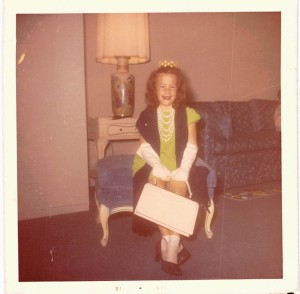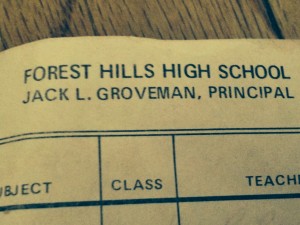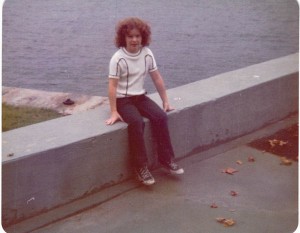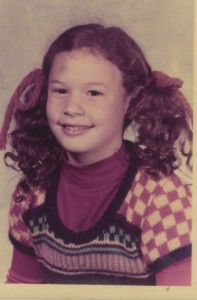 Second grade was probably the first time kids began to distinguish themselves academically and become aware of the intellectual prowess of their peers. The public school system in New York City at the time did very little to support the educational differences of students and teachers were quick to categorize students as “teacher’s pet” or “bane of my existence.”
Second grade was probably the first time kids began to distinguish themselves academically and become aware of the intellectual prowess of their peers. The public school system in New York City at the time did very little to support the educational differences of students and teachers were quick to categorize students as “teacher’s pet” or “bane of my existence.”
A few times a week kids would work on independent reading assignments. They would be assigned a module of stories to read with questions after each story. Once they completed all the stories in the module, they would move up to the next level. The modules were color coded, so as not to let on who was ahead and who was behind, but even the not-so-smart kids knew that if you were still on the orange module in May, there was a problem.
Even if teachers could detect a reading problem, they never seemed to do much with this information, except put the child in another class track the following year. Each grade had 4 to 5 tracks, so the second grade classes would be 2-1, 2-2, 2-3, 2-4 and 2-5. Here there were no nebulous color codes assigned. The “one class” had the students who performed best academically, followed by the 2, 3, 4 and 5 classes. It was an exceptionally biased and insensitive way to structure a classroom and a confidence-draining experience for students. Kids in the “one-class” quickly became assholes to kids in the other classes, claiming superiority and eventual world domination.
Back in 1971, no one talked about things like ADD, Aspergers, dyslexia or overall anxiety. You were either a good student or a bad student. You either followed the rules or you didn’t. Many kids with creative minds and hints of brilliance were shunned by teachers, separated from the class at that special desk in the front right near the teacher’s desk or routinely sent to the principal’s office.
While I did well academically in the early years, other non-academic projects rendered me inept. During arts and crafts, we were given a special type of coil that had large holes in it. We would thread a plastic needle and weave colored yarn in and out of the holes to create a homemade bookmark for our mothers. Despite having a needle with a hole the size of a quarter, it took me several tries to thread the thing. Once threaded, I would weave my yarn in and out until the end of the coil and then forget to tie a knot to hold it in place, pulling the entire piece of yarn out. While most kids were on their third or fourth bookmark, I was still working on line two of my first. This was frustrating for me and created a great deal of anxiety. The teacher called my mother to tell her I was a nervous child. Because obviously that was a better solution than taking the extra two minutes to help me work past my mental block. This may explain why I suck at other tasks like opening doors with keys, putting moving boxes (with instructions) together, wrapping gifts or changing a vacuum cleaner bag. I finished second grade with a complex, but no bookmark.
It was also in second grade that I realized I would be short forever. When you are three or four years old and you do things by yourself, you receive positive reinforcement from adults like, “What a big girl!” but when you are in second grade, you are told to line up in size order, so you can compare your height to the children who will not have to always have their clothes tailored by others who actually know how to thread a needle. This is the one situation where you don’t want to be first. I kept the title of first in line throughout grade school and thankfully shed this designation once I entered middle school and we were no longer subjected to standing in lines. Looking back, I can’t for the life of me, figure out why being in size order was necessary (except on picture day, when the  midgets (I mean little people) had to be placed somewhere where they could be seen (shortest kid (me) always sits to the far right of every class picture). I mean, what was the point? Did the teacher think she would lose the 3′ 5″ kid standing behind the one that was close to 6′ on the way to the water fountain or bathroom? It’s so arbitrary, Why not line up by shoe size, or bra cup size or by the size of a boy’s…oh nevermind. It’s obvious that the Board of Education should be held accountable for my need to continuously purchase high-heeled shoes beginning in 1978 when my mother no longer had a say in the matter, and I am billing them for $5,072.45 in shoe purchases immediately.
midgets (I mean little people) had to be placed somewhere where they could be seen (shortest kid (me) always sits to the far right of every class picture). I mean, what was the point? Did the teacher think she would lose the 3′ 5″ kid standing behind the one that was close to 6′ on the way to the water fountain or bathroom? It’s so arbitrary, Why not line up by shoe size, or bra cup size or by the size of a boy’s…oh nevermind. It’s obvious that the Board of Education should be held accountable for my need to continuously purchase high-heeled shoes beginning in 1978 when my mother no longer had a say in the matter, and I am billing them for $5,072.45 in shoe purchases immediately.
Despite the fact that I couldn’t wear high-heeled shoes in 1971 to compensate for my short stature or try to snag a place standing in the back row on picture day with the tall kids, I could focus on other aspects of “styling” that were not related to height. By second grade, I had moved on from the Botox-inspired ponytail I wore in earlier grades to side-by-side ponytails that created a nice symmetry with my side-by-side missing teeth. I was actually relieved by my missing teeth, because most kids had already lost several teeth and my delayed onset was just another confidence-draining aspect of second grade. In second grade, mom still controlled the selection of clothes, so dresses and tights were still the uniform and I would have to wait another two years before wearing my first polyester leisure suit to school which believe it or not, would be the biggest confidence-booster of the decade!






![tights.3[10]](http://59streetbridge.com/wp-content/uploads/tights.310-300x180.jpg)
